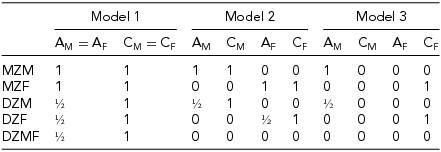The recurrence of mass shootings in the United States has led to a persistent call for legislation to restrict the sale of guns in America, contrary to what many believe to be the right bestowed by the Second Amendment to the U.S. Constitution. Current restrictions on the collection of data have confined most empirical studies of gun violence to the comparison of cultures that differ in the degree of legal restriction on the ownership of guns. While such studies establish a prima facie case for an association between gun violence and relatively lax gun control, any attempt to identify individuals at risk for the abuse of firearms has to be addressed at the level of individual differences within the context in which risk assessment is contemplated, namely the less restrictive environment of the United States.
The methods for such investigations and their limitations do not differ, in principle, from those in any other field of epidemiology, including psychiatric epidemiology, that seek to identify individuals at risk for pathology who might be targeted for intervention, prevention, or treatment. If this were possible, then it might also be possible to ameliorate risk without unduly restricting the constitutional privileges of individuals at low risk for life-threatening behavior.
The biological and social causes of individual differences in any aspect of human behavior are complex and multifactorial. We anticipate that the underlying etiology of gun violence is no simpler. The current note illustrates the potential subtlety of these influences by reference to the differential role of genetic and environmental effects on the attitudes of men and women to gun control in a U.S. twin sample.
Sample and Assessment
As part of a study of the genetic and social causes of health-related behavior, a 16-page Health Habits and Opinions (HHO) questionnaire was mailed in 1990 to a volunteer sample of twins ascertained through responses to a letter soliciting recruitment from the membership of the American Association of Retired Persons (AARP) and kindly published in their journal Modern Maturity. Median age of participants was 64 years (range 47–93 years). The HHO included a 50-item social attitudes inventory, including the 28 items of the Wilson–Patterson inventory (Wilson, Reference Wilson1975), supplemented by items designed to capture attitudes to additional issues salient in the United States at the time of study, such as ‘Moral Majority’ and ‘Gun control’. Each topic was presented as a one- or two-word item; for example, ‘Gun control’, next to which subjects were instructed to check one of three responses: Agree, Can't decide, or Disagree.
Data Summary
As is typical with volunteer twin samples, there was a marked excess of female respondents (Table 1). Response frequencies of men and women to the ‘gun control’ item reveal that at the time of survey (1990), a plurality of both sexes favored gun control but that endorsement frequencies differed significantly between sexes (p < 10−4), with women tending to ‘agree’ more than men with gun control. The frequencies of self-reported support for gun control in this volunteer twin sample gathered a quarter of a century ago are broadly similar to those reported in more detailed recent population studies of attitudes to gun control (e.g., Barry et al., Reference Barry, McGinty, Vernick and Webster2013).
TABLE 1 Attitudes to Gun Control in Male and Female Twins

N individuals from the Health, Habits, and Opinions Survey (HHO).
Table 2 shows the polychoric correlations between the ordered responses of the five twin groups to the gun control item with their asymptotic standard errors. The correlations in liability to endorse the item for MZ pairs in both sexes and that for female DZ pairs are all significantly greater than zero (p < 10−3). Those for male DZ pairs and unlike-sex pairs do not differ significantly from zero. The correlation for female MZ pairs does not differ significantly from that of female DZ pairs, suggesting that any resemblance in female twins is purely social rather than genetic. However, the excess of the male MZ correlation over that for male DZs borders on significance, implying that genetic factors may play some role in variation among males in their attitudes to gun control. The fact that the correlation for unlike-sex pairs is also small is at least consistent with the conclusion that the causes of variation in attitude are largely different between men and women.
TABLE 2 Polychoric Twin Correlations for Attitudes to Gun Control in the HHO

Testing Genetic and Environmental Models for Twin Resemblance in Attitudes to Gun Control
The previous initial considerations of the raw correlations may be formalized by fitting models to the summarized data to estimate and test the significance of the contributions of additive genetic effects to variation in liability of males and females (AM and AF), those of differences between families in the shared environment, such as those provided by parents and cohabitation (CM and CF), and the influences of the individual-specific environments (EM and EF) that are uncorrelated between family members. More detailed exposition of the meaning of model parameters, underlying assumptions of the model, and illustrative applications in a wide variety of clinical, social and epidemiological contexts is readily accessible (e.g., Carey, Reference Carey2003; Eaves et al., Reference Eaves, Hatemi, Heath, Martin, Hatemi and McDermott2010; Neale & Cardon, Reference Neale and Cardon1992).
In this case, the essence of the data is captured by three models. Model 1 assumes homogeneity of genetic and environmental effects across sexes and assumes that the same genetic and environmental effects contribute the same proportions of variance to differences in male and females (i.e., that all three DZ correlations are equal). Models 2 and 3 permit heterogeneity across sexes in the effects of genes and environment. Model 2 assumes that different genetic and shared environmental effects contribute to male and female correlations (i.e., that the correlation between unlike-sex pairs is expected to be zero). Model 3 makes the additional assumption that twin resemblance in males is entirely genetic and that in females is entirely environmental. The relative contributions of these effects to twin resemblance are summarized for each model in Table 3. Contributions of individual specific environments (EM and EF) to the total variance in liability are obtained by subtraction: EM=1-AM-CM and EF=1-AF-CF.
TABLE 3 Models for Contributions of Additive Genetic Effects (A), Shared Environmental (C) and Individual-Specific Environmental (E) Influences to Correlations in Liability to Attitude Responses in Male and Female Twins

See text for description of models and definition of parameters.
Model parameters were estimated from the polychoric correlations by weighted least squares, using the inverse of their squared asymptotic standard errors as weights. The sum of weighted squared residuals for each model was adopted as an index of goodness of fit. Approximate tests of fit and model comparisons were conducted on the assumption that the residual weighted sums of squares followed the chi-square distribution.
Results
Table 4 summarizes the parameter estimates and test statistics for the three models. The results of the more formal analysis support the conclusions of an informal evaluation of the twin correlations. Allowing for sex differences in the contributions of genes and environment (model 2) improves the fit compared with model 1, which assumes the same genes and environments contribute equally in males and females, χ2 (2) = 6.03, p = .05. A simple reduction of the model (model 3) does not make the fit worse and suggests that the data are consistent with a completely different etiology of twin similarity in men and women. Taken at face value, the data suggest that twin correlations in men's attitudes to gun control are purely genetic, whereas those for women are purely social.
TABLE 4 Estimates and Tests of Genetic and Environmental Contributions (%) to Variance in Liability in Attitudes to Gun Control

Conclusions and Discussion
Diversity of attitudes to gun control is persistent and salient in the United States. The greater support for gun control among women is no surprise. Although our data were collected 25 years ago, the relative prevalence rates in men and women are quite consistent with those reported in contemporary studies. What remains undocumented, and what our hitherto unpublished twin data imply, is that the sexes differ not only in the prevalence of resistance to gun control but also in the underlying causes of individual differences in attitude to guns within sexes. Whereas family resemblance in men appears to be largely genetic, familial differences between women appear to be largely social in origin. Such marked sex differences in the causes of individual differences were also reported by Martin and Eysenck (Reference Martin, Eysenck and Eysenck1976) in an earlier self-report study of sexual libido in male and female twins. It is premature to speculate about the implications of such tentative findings for evolutionary psychology. Our sample is small by comparison with those required for firm conclusions (c.f. Martin et al., Reference Martin, Eaves, Kearsey and Davies1978). Subjects were self-identified by response to advertisement, and only the simplest model for genetic and environmental effects can be fitted pending data on larger samples in a wider constellation of relationships and covariates that would allow estimation of non-additive genetic effects, the effects of social interaction between family members, and the effects of the social environment on the expression of genetic differences (G x E interaction).





